Papers by Henry Scheyvens
Satellite Earth Observations and Their Impact on Society and Policy, 2017
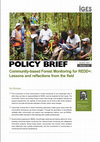
Lessons and reflections from the field The involvement of local communities in forest monitoring ... more Lessons and reflections from the field The involvement of local communities in forest monitoring is one meaningful way in which they can take on responsibilities for REDD+ and be rewarded for their inputs. The Community Carbon Accounting Project shows that through well-designed training and support programmes, the capacity of local people can be built to take forest measure-ments for accurate and precise estimates of forest carbon stock changes. Community involvement in forest monitoring particularly makes good sense when the communities themselves are forest managers. Through the generation of scientifically verifiable data, communities can explore new management options, such as REDD+, and will be better informed in their dealings with outside professionals. Governments preparing for REDD+ should begin exploring and testing options for incor-porating community-based monitoring into national forest monitoring and safeguards information systems. Being locally based, communities can ...
is located about 40 km south of Manila, the national capital, and adjacent to Lake Laguna, the la... more is located about 40 km south of Manila, the national capital, and adjacent to Lake Laguna, the largest lake in the country (Fig. 1 (a) ). The subwatershed, one of 24 subwatersheds surrounding the lake, has a basin area of about 120 km2 and accounts for 4.1% of the ent i re watershed of the lake 10. Four local governments manage the Silang-Santa Rosa subwatershed, which holds a total population of about 570,000 people: the Municipality of Silang, Cavite (upriver) and the Cities of Biñan, Santa Rosa, and Cabuyao, Laguna (downriver ) 11 ( Fig. 1(b) ). Study area
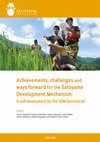
The International Partnership for the Satoyama Initiative (IPSI) is a global network to promote c... more The International Partnership for the Satoyama Initiative (IPSI) is a global network to promote collective efforts for sustainability in socio-ecological production landscapes and seascapes (SEPLS), and thereby to contribute to the realisation of “living in harmony with nature”. The Satoyama Development Mechanism (SDM) is a seed funding programme that supports selected projects proposed by IPSI members. This report centred on the way and the extent to which the SDM projects contributed to the IPSI Strategic Objectives, and to the Aichi Biodiversity Targets (ABTs) and the Sustainable Development Goals (SDGs). We further explored the possibility that the SDM projects were likely to induce transformative change, with particular focus on the policy uptake of the project outputs, the mobilisation of additional investments, partnership building and outreach. In addition, the report provides the results of a self-assessment of the performance of the SDM Secretariat.
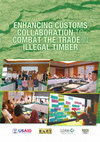
Enhancing Customs Collaboration to Combat the Trade in Illegal Timber T he authors are indebted... more Enhancing Customs Collaboration to Combat the Trade in Illegal Timber T he authors are indebted to The Nature Conservancy (TNC) for funding the research and providing guidance throughout the analysis and drafting of this report. Special thanks are due to Mr. David Cassells, Senior Policy Advisor at TNC, who had the original idea of exploring options for a more active role of Customs in contributing to curbing the trade in illegal timber, and who played an important role in extracting messages from the peer review workshop for this report held in Bangkok, 28-29 October 2009. The research team also appreciates the guidance and support provided by Dr. Cole Genge, Deputy Chief of Party (TNC-RAFT), Mr. Jack Hurd, Chief of Party (TNC-RAFT), and Ms. Nathakarn Aswalap, (TNC-RAFT) Program Assistant, for the drafting of the report and the organization of the peer review workshop. We also owe a debt of gratitude to the report's peer reviewers, Mr. Hugh Speechly, UK Department for International Development (DIFD), Mr. Flip van Helden, European Commission, and Mr. Hui Fu, World Customs Organisation (WCO), for their valuable comments on the first draft of the report, as well as the officials from Customs and Forestry Departments and representatives of international organizations who actively participated in the peer review workshop, providing key insights and feedback on the second draft. Special thanks are due to Mr. Chen Hin Keong, Senior Forest Trade Advisor, TRAFFIC International, for his comments on the first draft of the report and his contribution to the content and facilitation of the workshop. We also thank Dutch, Indonesian, and Japanese Customs officials for sharing information during the interview survey for this report.
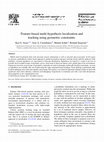
Mobile robot localization deals with uncertain sensory information as well as uncertain data asso... more Mobile robot localization deals with uncertain sensory information as well as uncertain data association. In this paper we present a probabilistic feature-based approach to global localization and pose tracking which explicitly addresses both problems. Location hypotheses are represented as Gaussian distributions. Hypotheses are found by a search in the tree of possible local-to-global feature associations, given a local map of observed features and a global map of the environment. During tree traversal, several types of geometric constraints are used to determine statistically feasible associations. As soon as hypotheses are available, they are tracked using the same constraint-based technique. Track splitting is performed when location ambiguity arises from uncertainties and sensing. This yields a very robust localization technique which can deal with significant errors from odometry, collisions and kidnapping. Experiments in simulation and with a real robot demonstrate these properties at low computational costs.

Bangladesh is a highly natural hazard prone country. Rural households are vulnerable to a range o... more Bangladesh is a highly natural hazard prone country. Rural households are vulnerable to a range of climate-related natural hazards such as floods, cyclones, riverbank erosion, drought, storm surges, and tornados. In north-western parts of the country, almost every year they face seasonal (September-November) hardship in the form of a near famine situation, which is termed as monga. To cope during monga, poor households adopt various strategies including advance labor sale, asset sale, informal borrowing and internal migration. This paper evaluates the impact of ex-ante access to microfinance on these coping strategies, using switching regression to control the unobserved selection bias in deciding to be a member of a microfinance scheme. The analysis reveals that the dependence on these coping strategies is significantly lower for households with ex-ante access to microfinance than those without. These observations are particularly pertinent to the development of adaptation strategi...
We investigate the special case of quintic interactions for massless higher spin gauge fields usi... more We investigate the special case of quintic interactions for massless higher spin gauge fields using the string-theoretic vertex operator construction for higher spin gauge fields in Vasiliev's frame-like formalism. We compute explicitly the related 5-point interaction vertex in the low energy limit of string theory and find that: the structure of the quintic s 1 − s 2 − s 3 − s 4 − s 5 higher spin interaction gets drastically simplified and localized if a) the spin values satisfy the constraint s 1 + s 2 + s 3 = s 4 + s 5 + 2 (and, more generally, if the sum of three spin values roughly equals the sum of the remaining two b) One of the spin values, s 4 or s 5 is sufficiently small. In this paper, the explicit computation is done for the case s 4 = 4
Customs administrations often have to deal with goods arriving in their territory with little or ... more Customs administrations often have to deal with goods arriving in their territory with little or no external support or background information to assist them with their controls. The basic assumption of the IGES-TNC study was that enhanced collaboration between customs agencies would enable them to be more effective in combating the cross-border trade in illegal timber. The objectives of the IGES-TNC study were to identify useful types of collaborative action between customs authorities to combat the illegal timber trade, and to explore types of arrangements under which this collaboration could be organised. The methodology of the study is summarised in Box 1.
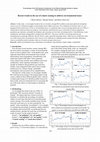
In this study, we investigated trends in the use of remote sensing (RS) to address some major glo... more In this study, we investigated trends in the use of remote sensing (RS) to address some major global environmental issues to see if it is being increasingly or decreasingly used to address each issue. We considered several land, water, air, and integrated Earth system issues. Of the 12 environmental issues we considered, there was an increasing trend in the use of RS in 5 (deforestation, urban heat island, air pollution, water pollution, and biodiversity loss), a flat trend in 4 (forest degradation, greenhouse gas emissions, sustainable development, and ecosystem services) and a decreasing trend in 3 (desertification, ocean acidification, and climate change/global warming) from 2000-2013. The issues with flat or decreasing trends (except desertification) are generally difficult to directly observe using current RS instruments alone, which may have limited the wider use of RS in these areas. Development of new sensors or new methods for combining remote sensing with other information...
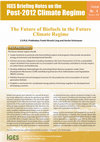
Institute for Global Environmental Strategies URL:http://www.iges.or.jp Biofuels have gained much... more Institute for Global Environmental Strategies URL:http://www.iges.or.jp Biofuels have gained much attention as a solution for becoming energy independent, reducing the greenhouse gas (GHG) emissions, and promoting livelihoods in the Asia Pacific region and elsewhere. To this effect, the Asia Pacific region has already claimed 25% of the world’s bioethanol production with China being the largest producer followed by India. Moreover, Asia uses 50% of world fuel wood mostly owing to its socioeconomic conditions characterized by limited access to commercial forms of primary energy such as electricity, coal, and diesel. 75% of households in India, China and nearby countries still use solid fuels, which include dung, wood, agricultural residues or coal (WHO 2005). A simplistic argument that modernization of life requires abandoning of natural energy sources may lead to larger emission of anthropogenic GHGs caused from greater use of fossil fuels. On the other hand, there is a massive amou...

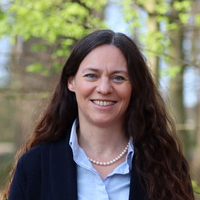









Uploads
Papers by Henry Scheyvens